If you’re a fishing newbie, you might have heard that the monofilament leader lines are the best to use for beginners. I’m here to tell you that monofilament leaders are not just for beginners. The pros use monofilament lines and leaders as well.
Monofilament leaders have their place in the world of fishing. Understanding how these leaders fit in the grand scheme of things is essential.
This guide will help anyone looking to understand more about monofilament leaders and how they fit in with your fishing type.
Summary
| Monofilament Leaders | |
|---|---|
| When To Use | Trolling, Live Bait Fishing, Bottom Fishing (Jigging), Casting Lures |
| Line Strength | 2lb – 100lb+ |
| Line Diameter | The Thickest Line Out Of The 3 Different Types Of Lines |
| Abrasion Resistance | Moderate Abrasion Resistance |
| Line Stretch | Stretches Uniformly With Load ~ 10% – 25% Stretch |
| Line Buoyancy | Sinks Slowly |
| Water Absorption | Yes – Not Great For Performance |
| Line Visibility | High |
| Line Colour | Many Options To Choose From |
| Knots | Easy To Make Knots Provides Good Knot Strength If Properly Done |
| Storage | Avoid Sunlight & Hot Temperatures |
| Life Span | 1 – 2 Years |
| Recyclability | Yes |
| Price | Cheapest |
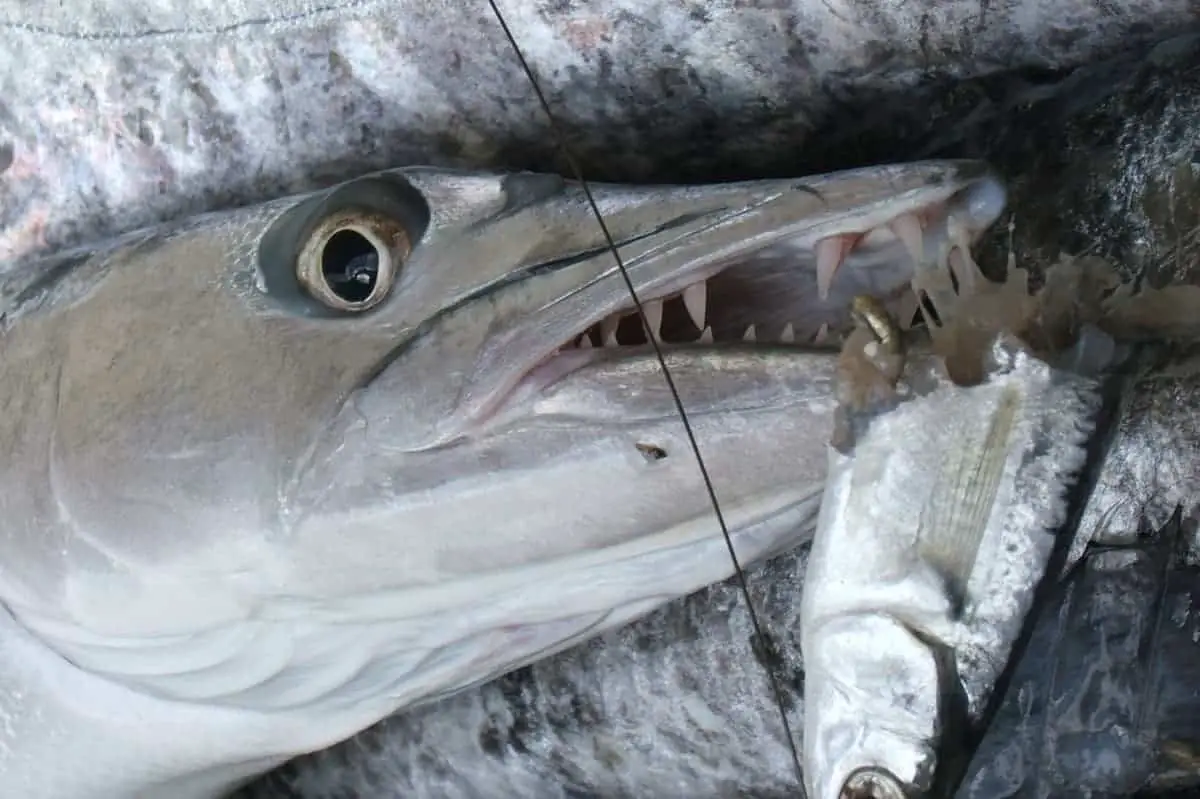
What Is The Main Function Of A Leader?
The primary purpose of a leader is to:
- Improve bait presentation
- Protect your mainline from snapping
- Provide different properties than the mainline
But do you need a leader all the time when fishing? Absolutely not! Deciding when to use a leader depends on what you’re fishing for and the water conditions.
The Difference Between Monofilament Fishing Lines Vs Leaders?
During your last trip to the tackle store, you might have noticed two versions of monofilament lines being sold, mainlines and leader lines.
But why! Is there a difference between monofilament fishing lines versus leader lines?
Mainlines and leader lines are essentially the same except for a few minor differences.
- Leader lines are sold at much smaller spools.
- Leader lines are typically more abrasion resistant than mainlines are.
- Leader lines can have lower or higher amounts of line stretch than mainlines.
How Long Should My Leader Be?
The leader length will influence your bait presentation and action. Most anglers will use a leader length between 24″ – 30″ because it provides the right amount of bait action for most situations.
There is no one fits all length that you can follow, but here are some guidelines:
| Leader Length | Casting | Trolling | Bottom Fishing | Live Bait | Power Fishing | Finesse Fishing | Fishing In Cover |
| Short | Moderate | Poor | Poor | Poor | Excellent | Poor | Excellent |
| Medium | Excellent | Excellent | Excellent | Moderate | Excellent | Moderate | Moderate |
| Long | Poor | Excellent | Moderate | Excellent | Poor | Excellent | Poor |
Short Leaders: 12″ – 24″
Medium Leaders: 24″ – 30″
Long Leaders: Greater than 30″
When Should You Use a Monofilament Leader Line?
Monofilament leaders are very versatile, making them suitable for many different applications.
Below are some situations where using monofilament leaders would be recommended:
Trolling
- Performance: Great
- Reasons: Trolling stretches the line when being dragged across the water. Essentially turning the line into a spring. This helps set the hook when a fish hits the bait and prevents the line from snapping if it was a hard strike.
Live Bait Fishing
- Performance: Great
- Reasons: Monofilament is lightweight and relatively buoyant, making it a great choice when fishing with live bait. Mono will allow the live bait to move around more freely and naturally.
Bottom Fishing (Jigging)
- Performance: Not the best but does the job
- Reasons: Monofilament is tough to withstand being dragged across rocks and other rough surfaces at the bottom of the water.
Casting Lures
- Performance: Not the best but does the job
- Reasons: When casting, you’re usually fishing near the top of the water column, making bait presentation important. Mono leaders will help slow down the sinking rate of your bait.
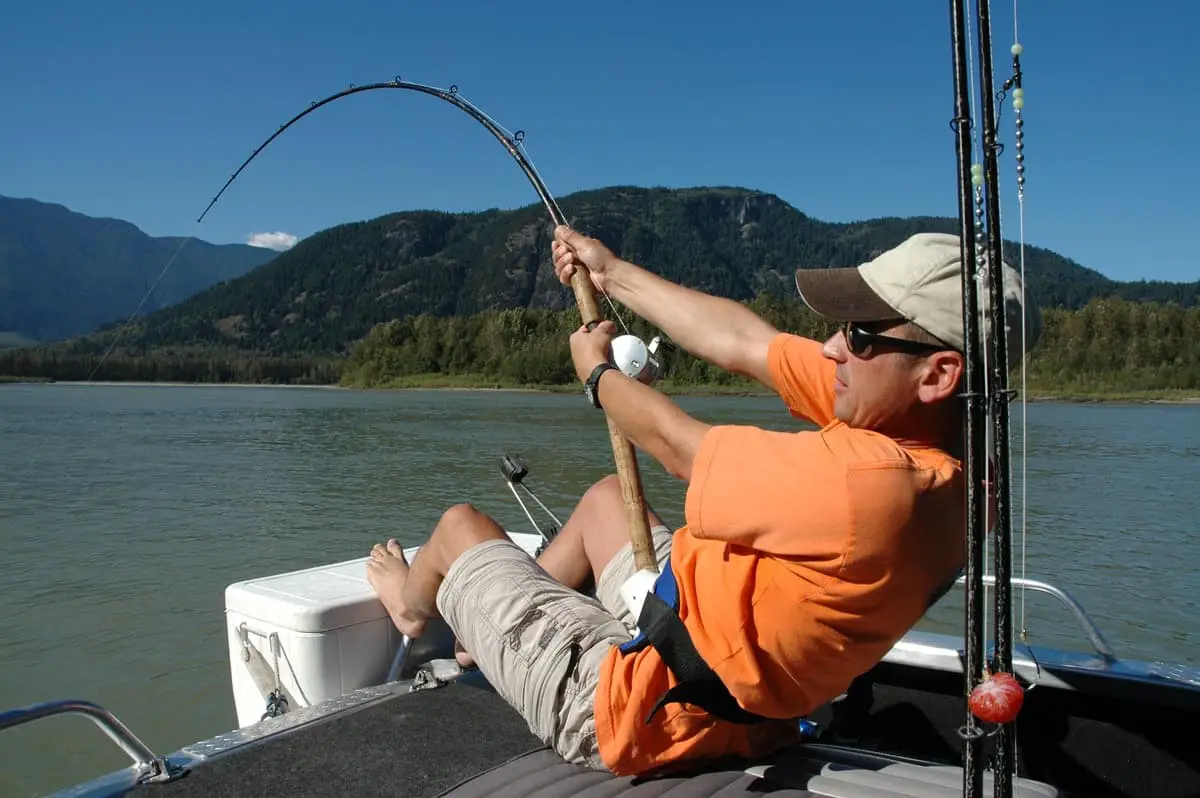
Picking The Correct Monofilament Leader Line Strength
Picking the proper line test for your leader line is critical. You don’t want your leader to be too weak or strong compared to your mainline.
The strength of your leader line compared to your mainline can affect your fishing experience.
Some anglers suggest that a leader line should be weaker than the mainline. Other anglers say that a leader line should be stronger than the mainline. Who is right?
The truth is, they are both right – depending on the situation and personal preference.
Here is a rule of thumb that you can refer to – pick a leader that is 5lb or next common line rating higher or lower than your mainline.
Using this rule of thumb will ensure that you don’t use a leader line that is too weak cause your leader to break easily. Or too strong, which could cause you to break your mainline if you got snagged.
Here are some other considerations when choosing the proper line rating.
- Fish Weight & Teeth
- How Rough is a Fish’s body
- Abrasion Factors
- Sensitivity
- Buoyancy
- Visibility
- and many more
Monofilament Characteristics
Monofilament leaders are used in different applications. Let’s take a deeper look into the attributes of mono.
Line Diameter
Line diameter influences your leader line’s characteristics:
| Thinner Lines | Thicker Lines | |
|---|---|---|
| Line Strength? | 🔻 | 🔺 |
| Abrasion Resistance? | 🔻 | 🔺 |
| Line Visibility? | 🔻 | 🔺 |
| Sinking Rate? | 🔻 | 🔺 |
| Line Sensitivity? | 🔺 | 🔻 |
| Line Flexibility? | 🔺 | 🔻 |
| Shock Resistance? | 🔻 | 🔺 |
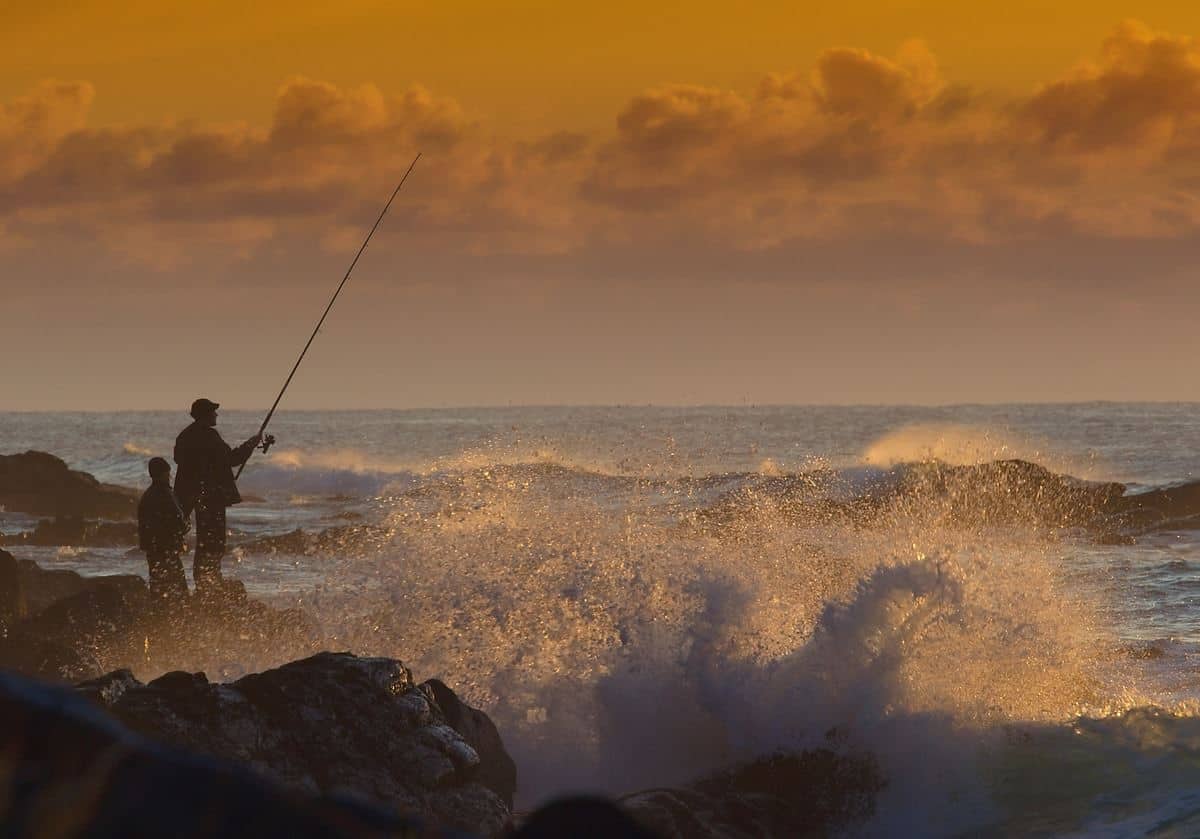
Abrasion Resistance
A leader line can face some rough conditions.
- Rocks
- Teeth
- A fish thrashing around
- Underwater structures
This is why abrasion resistance must be considered when deciding what type of leader line to use.
Line Stretch
Monofilament lines tend to stretch when under tension. In fact, mono has the most stretch than any other type of fishing line.
Monofilament can stretch between 10% to 30% of its length.
The range of which a monofilament can stretch is dependent on the materials and chemical additives used to make the line.
High Line Stretch
Pros: A line with lots of stretch can act as a shock absorber. The stretch will dampen the load transfer directly from your hook to your mainline.
Fish that strike hard can produce a large force on your line when they bite. This has caused damage to fishing gear like rods, reels, and snapping mainlines. The stretch will decrease some of that force, protecting your equipment.
Reducing the overall force on your line will help prevent the hook from ripping out of a fish’s mouth when they hit your bait.
Cons: Stretch dampens the fish’s impact force also means it will reduce the force you apply when setting the hook.
Low Line Stretch
Pro: A low stretch line will have more sensitivity than a line with more stretch.
Cons: Less stretchiness equals less shock-absorbing effects. Don’t use low stretch leaders when trolling unless your mainline has a fair bit of stretch to make up for it.
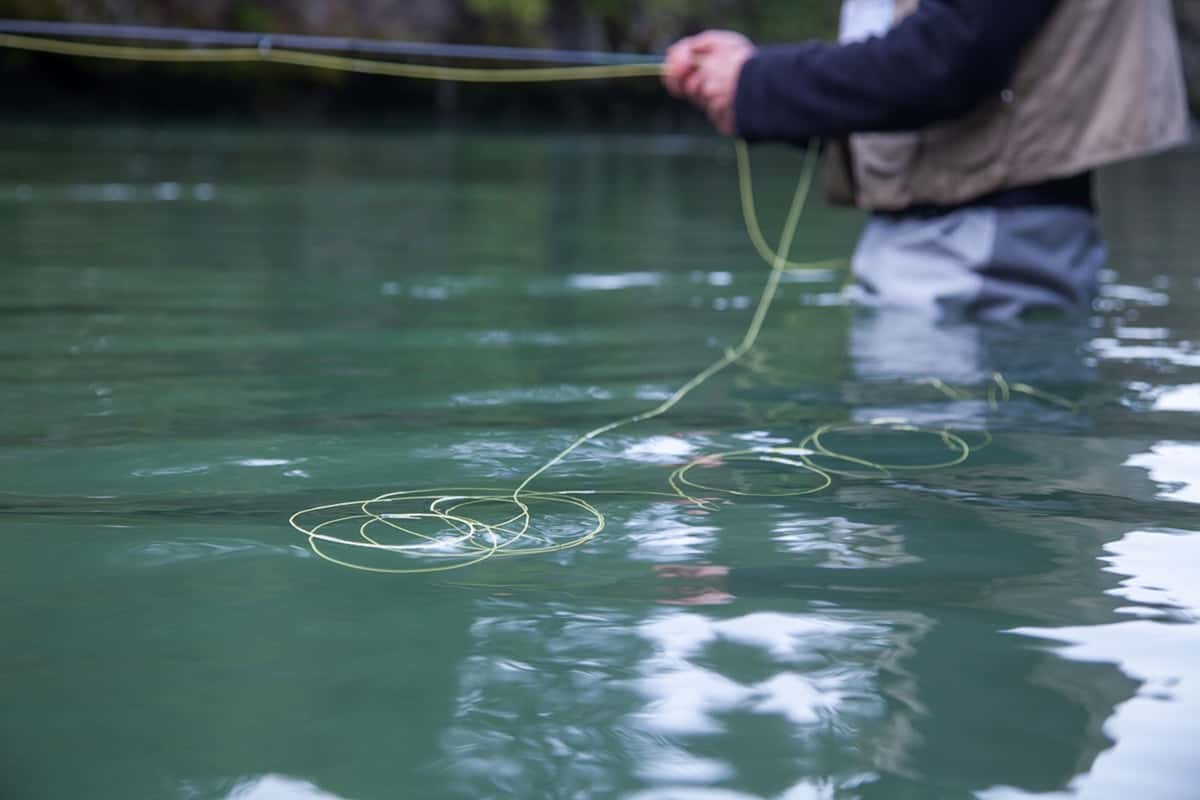
Buoyancy
Line buoyancy determines if a fishing line floats or sinks, impacting your bait’s presentation.
Monofilament fishing lines are slightly denser than water, causing them to sink in water. Mono’s density is approximately 15% more than freshwater and 12% more than saltwater.
Water Absorption
Monofilament can absorb roughly 10% of its weight in water. Unfortunately, water absorption results in a 10% reduction in strength for premium lines and as high as 30% for the cheaper lines.
When mono absorbs water makes it easier for the line to stretch. Eventually, the absorbed water will evaporate over time. Not a big issue with freshwater, but saltwater is another story.
When saltwater is absorbed, it brings microscopic salt particles into the line. The salt particles will remain in the line as the water evaporates when the line is not being used.
Over time, the salt particles will alter some of its performance, reducing:
- Flexibility
- Strength
- Performance
- Life span
Visibility
You want a leader line to be as invisible as possible to increase your bait presentation. A visible leader will not look natural and could even scare off fish, especially if they are more cautious.
How visible a line is underwater is dependent on how light passes through the water and fishing line. If a fishing line and water can similarly reflect light, the more invisible the line will become. The greater the difference, the more the line will appear underwater.
Physics measures how an object can bend light is called the “Index of refraction.”
Water has an index of refraction, roughly around 1.33. Monofilament has an index of refraction around 1.55, approximately 16.5% greater than water.
This means mono will be visible underwater, BUT it won’t stick out like a sore thumb.
What will manner more for monofilament is the line colour.
Line Colour
You want to pick a colour that blends in with the water – or do you?
Colours need light for it to appear underwater. Light travels through air and water in waves. The length of the waves, called wavelengths, determines if a particular colour appears or not.
Every colour needs a specific wavelength of light for certain colours to appear.
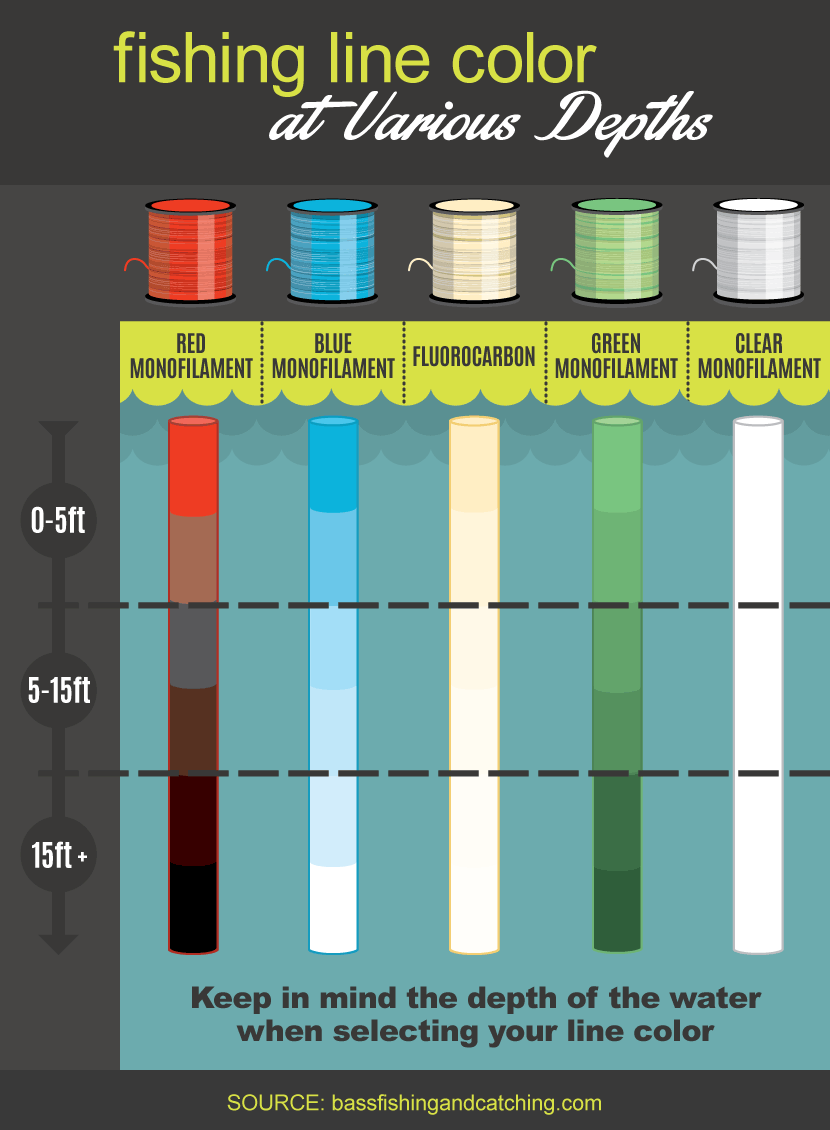
How Well Does Monofilament Knots Hold?
Having a strong knot is critical! These are the only thing that keeps a fish on your line but is also a weak point.
This is why knot strength is so important, and it describes how much weight a knot can hold before it breaks. You can assume a knot strength of 50% of your fishing line rating as a general rule of thumb.
When knots are done well and carefully, the knot strength will be approximately the same as the fishing line’s pound rating.
There are a lot of factors that will influence the knot strength.
Line Material:
- The outer surface of a monofilament fishing line has some friction to it. Friction helps knots lock in place, making it harder for them to become undone.
Line Diameter:
- A thicker line will hold a knot better than thinner lines because the thicker line will be able to “pinch” itself more than thinner lines.
Line Flexibility:
- Line flexibility makes it easier for knots to cinch down and lock in place. If the line was really stiff, knots would be able to become undone much more easily.
Type of knots:
- Every knot serves a particular purpose and has its own knot strength. Understanding which knots to use plays a significant role in how well the knot will hold up.
Here are eight beginner-friendly knots that you can use with monofilament fishing line:
Improved Clinch Knot – Ties line to hooks, lures, swivels, and sinkers
Uni Knot – Tie line to hooks, lures, swivels, and sinkers
Double Uni Knot – Great for tying two separate segments of lines together
Surgeon’s Knot / End Loop – Ties hooks, lures, swivels, and sinkers
Snell Knot – Great for tying line to hooks.
How To Store Monofilament Fishing Lines During The OffSeason?
Not correctly storing monofilament leaders could reduce its lifespan.
There are several factors that you need to consider, but the two significant factors are:
- UV Rays
- Temperature
To properly store your leader spools, place the spools in a tight container that blocks out light.
As for temperature, monofilament should be stored between 65°F (15°C) to 77°F (25°C).
Avoid storing mono in hot temperatures wherever possible. Prolonged exposure to extreme heat can cause damage.
Monofilament Fishing Line Typical Life Span
Monofilament leaders do have a shelf life, but it’s dependent on many factors:
- How often are you fishing?
- Are you fishing with a lot of drag?
- How are you properly storing your line during the offseason?
- Are you properly maintaining your leaders?
- How long has the leader line been in storage?
Generally speaking, you can expect to replace your monofilament leader lines between 1 – 2 years.
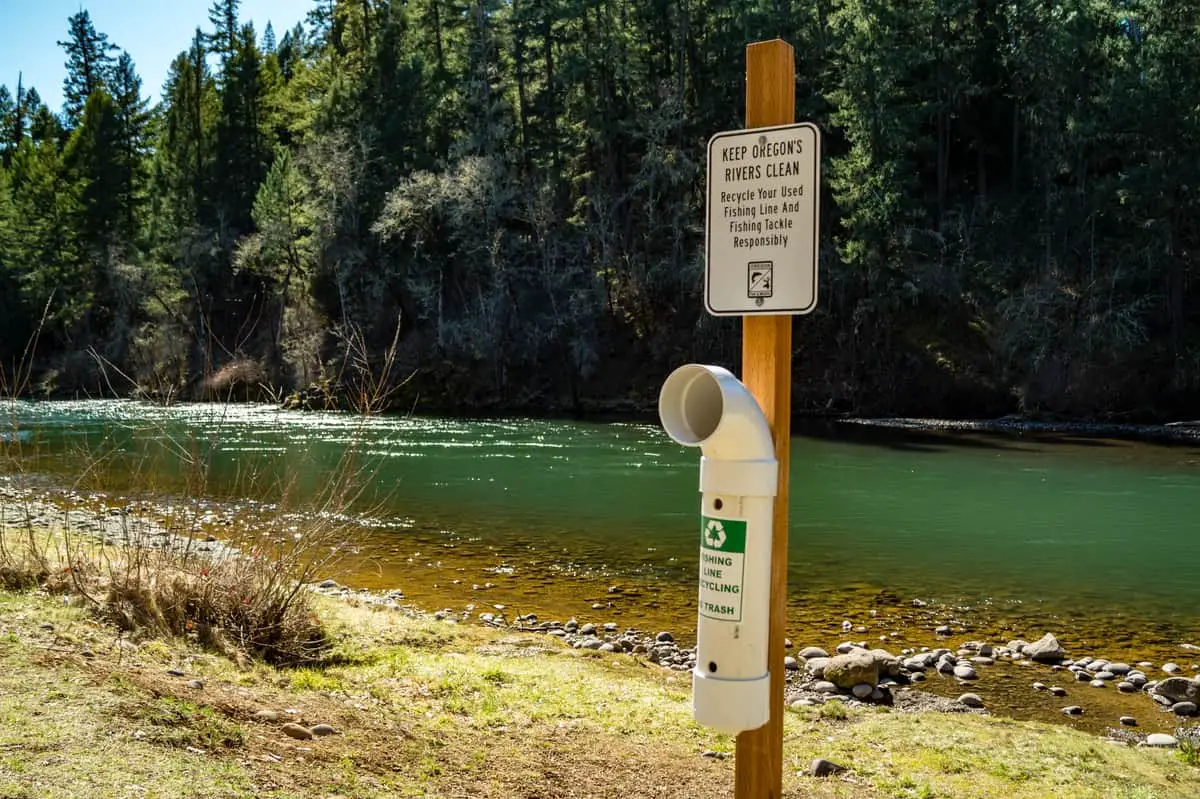
How To Dispose Of Old Monofilament Fishing Lines?
Disposing of your old leader lines incorrectly could significantly impact the environment. Wildlife can either get tangled in fishing lines or eat fishing leaders thinking it was food; both could be deadly.
To properly dispose of your old monofilament line, you need to recycle it. Don’t toss leaders into the same household recycling bin you have for recycling. There is a unique recycling process that needs to occur when recycling monofilament.
Your local tackle store can help with disposing of your leaders for you. They will send your line to Berkley, where they will recycle your old line.
Happy Fishing and Tight Lines!
